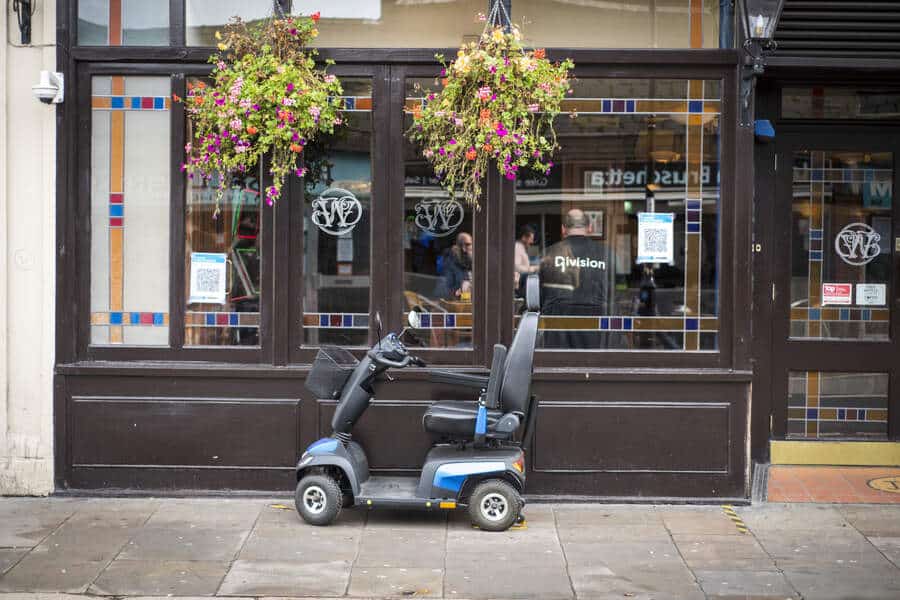EXCLUSIVE: Government updates guidance over “non-class” mobility scooters and powered wheelchairs

The UK Government has updated its guidance over what constitutes a ‘non-class’ invalid carriage/mobility scooter and has provided greater clarity over where these vehicles should be used and what requirements are needed to operate them.
The Driver and Vehicle Licensing Agency (DVLA) had been receiving applications to register vehicles as invalid carriages/mobility scooters that were faster, wider or heavier than class 1, 2 or 3. As such, the Department for Transport (DfT) confirmed that it had consulted with the International Vehicles Standards and Licensing team to draft new wording for its guidelines.
A spokesperson for the DfT exclusively commented to THIIS: “There has been no change to the law. We have updated the guidelines on mobility scooters and powered wheelchairs to provide greater clarity to manufacturers on vehicles that are not covered in existing classifications.”
The spokesperson continued: “We continue to consult with industry to ensure the best guidance and regulations are in place for both manufacturers and users.”
There are different rules for using a mobility scooter or powered wheelchair, depending on what ‘class’ it is. According to Government guidelines, a mobility scooter or powered wheelchair is usually in ‘Class 2’ if it has a maximum speed of 4mph or less, or ‘Class 3’ if it has a maximum speed of 8mph.
Class 2 and 3 mobility scooters and powered wheelchairs can be used on pavements (and other pedestrian areas) and on cycle tracks, which are separated from the road by barriers or distance. They cannot however be used on cycle lanes, which are painted on the road and run alongside where usual road traffic (like cars) go.
Class 3 mobility scooters and powered wheelchairs can also be used on the road but the user needs to register their vehicle with the DVLA.
According to the updated guidelines mobility scooters and powered wheelchairs are ‘not in a class’ if they go more than 8mph; are wider than 0.85 metres and weigh more than 150kg (or 200kg if the user needs any equipment attached to it).
A mobility scooter or powered wheelchair that is ‘not in class’ cannot be used on a pavement (or any other pedestrian areas). They cannot be used on cycle tracks or cycle lanes and the user must have a valid driving licence to drive one, with their vehicle registered with the DVLA.
The criteria regarding mobility scooters and powered wheelchairs that are ‘not in class’ also affects eyesight requirements, which are stricter than for users of a Class 2 or 3 vehicle.
A user of a ‘not in class’ mobility scooter and powered wheelchair must be able to read a car’s registration number from a distance of 20 metres. For classes 2 and 2, as before, a user of a mobility scooter and powered wheelchair must be able to read a car’s registration number from a distance of 12.3 metres.
The weight limit of “not in class” products could apply to many heavy products, including mobility scooters with canopies and some heavy powerchairs, with retailers needing to be extra vigilant that they are selling the right mobility scooter or powered wheelchair to a user.
Carol Elliot, Managing Director of City Mobility in Inverness, commented to THIIS: “As conscientious retailers we check that people that buy products from us are getting the right product for their needs and have the competency and capacity to use them as far as possible through demonstrations and test drives.
“We’ve heard from lots of people that have bought products via the internet then come to us for servicing and repairs and regretted their decision. Some products have turned out to even be illegal in the UK. The new classification from the Department of Transport is helpful in providing greater clarity for users of mobility products.
“That, coupled with the new accredited Powered Wheelchair and Mobility Scooter training for retailers, approved by the Department of Transport and provided by Driving Mobility, helps improve safety for product users and for the general public”.


